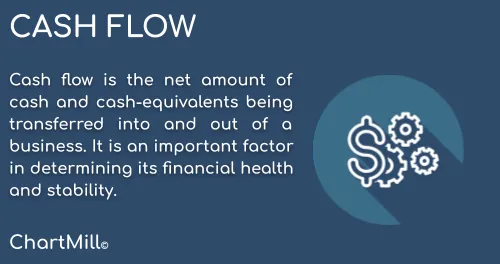
What is Cash Flow?
By Kristoff De Turck - reviewed by Aldwin Keppens
Last update: Apr 19, 2024
Cash flow is the movement of money into or out of a business. It is the net amount of cash and cash-equivalents being transferred into and out of a business. Positive cash flow indicates that a company's liquid assets are increasing, while negative cash flow means that a company's liquid assets are decreasing.
What’s the difference between free and operating cash flow?
Free cash flow is a measure of a company's financial performance that indicates how much cash is available after deducting capital expenditures. It is calculated by taking a company's cash flow from operating activities and subtracting capital expenditures. This measure is important because it demonstrates a company's ability to generate cash available for such things as dividend payments, debt reduction or acquisitions. It is a more conservative measure of a company's cash flow than other measures, such as operating cash flow, because it takes into account the money a company has to spend on things like new equipment or buildings.
Operating cash flow shows the amount of money generated from ongoing operations. It is calculated by taking a company's net income and adjusting it for non-cash items, such as depreciation and amortization, and for changes in working capital. The main difference compared to free cash flow is that operating cash flow takes into account only the money generated from core activities. This is the money available to pay bills, make investments and distribute to shareholders. This makes it a more comprehensive measure of a company's cash flow than other measures, such as free cash flow, because it includes all cash generated from a company's operations, whether or not it is used for capital expenditures.
Why is cash flow so important?
A company's cash flow is important because it shows that the company is able to generate cash and meet its financial obligations. A distinction is made between positive and negative cash flow.
- Positive cash flow indicates that a company has enough cash to pay its bills, make investments and pay dividends to shareholders.
- Negative cash flow, on the other hand, indicates that a company is struggling to meet its financial obligations and may need to borrow money or sell assets to generate cash. This can be a red flag for investors, who may be reluctant to invest in a company with negative cash flow. In addition, lenders may be hesitant to provide financing to a company with negative cash flow because it may be considered higher risk. Therefore, a company's cash flow is an important factor in determining its financial health and stability.
Cash flow from investing activities versus financing activities.
Cash flow from investing activities is the cash flow generated or used by a company for investments, such as the purchase or sale of long-term assets, such as property, plant and equipment. This contrasts with cash flow from financing activities, which are the cash flows generated or used by a company for activities related to its financing, such as the issuance or repurchase of debt or equity securities, or the payment of dividends.
What are the benefits of having enough cash?
There are several benefits of having plenty of cash flow for a business.
- First, a large cash flow can improve a company's financial stability and flexibility. The company can then pay its bills, make investments and pay dividends to shareholders without having to borrow money or sell assets. This can make the company more attractive to investors and creditors because it shows that the company is able to generate its own money.
- Second, having a lot of cash flow can allow a company to take advantage of opportunities that arise. For example, if a company has a lot of cash flow, it can make a strategic acquisition or invest in new technology without having to worry about finding funds. This can help the company grow and remain competitive in its industry.
- Third, a large cash flow can also provide a buffer in times of economic downturn. If a company has a lot of cash on hand, it can weather a recession or other difficult economic conditions without major cutbacks or layoffs. This can help the company sustain its operations and position itself for future growth.
In general, sufficient cash flow makes a positive contribution to achieving financial and strategic goals.
Where can a company's cash flow statement be found?
A company's cash flow statement can be found in its financial statements, which are usually included in its quarterly and annual reports. These reports can be found on the company's website. You can also access the financial statements in ChartMill, which are part of the profile page of the company in question.
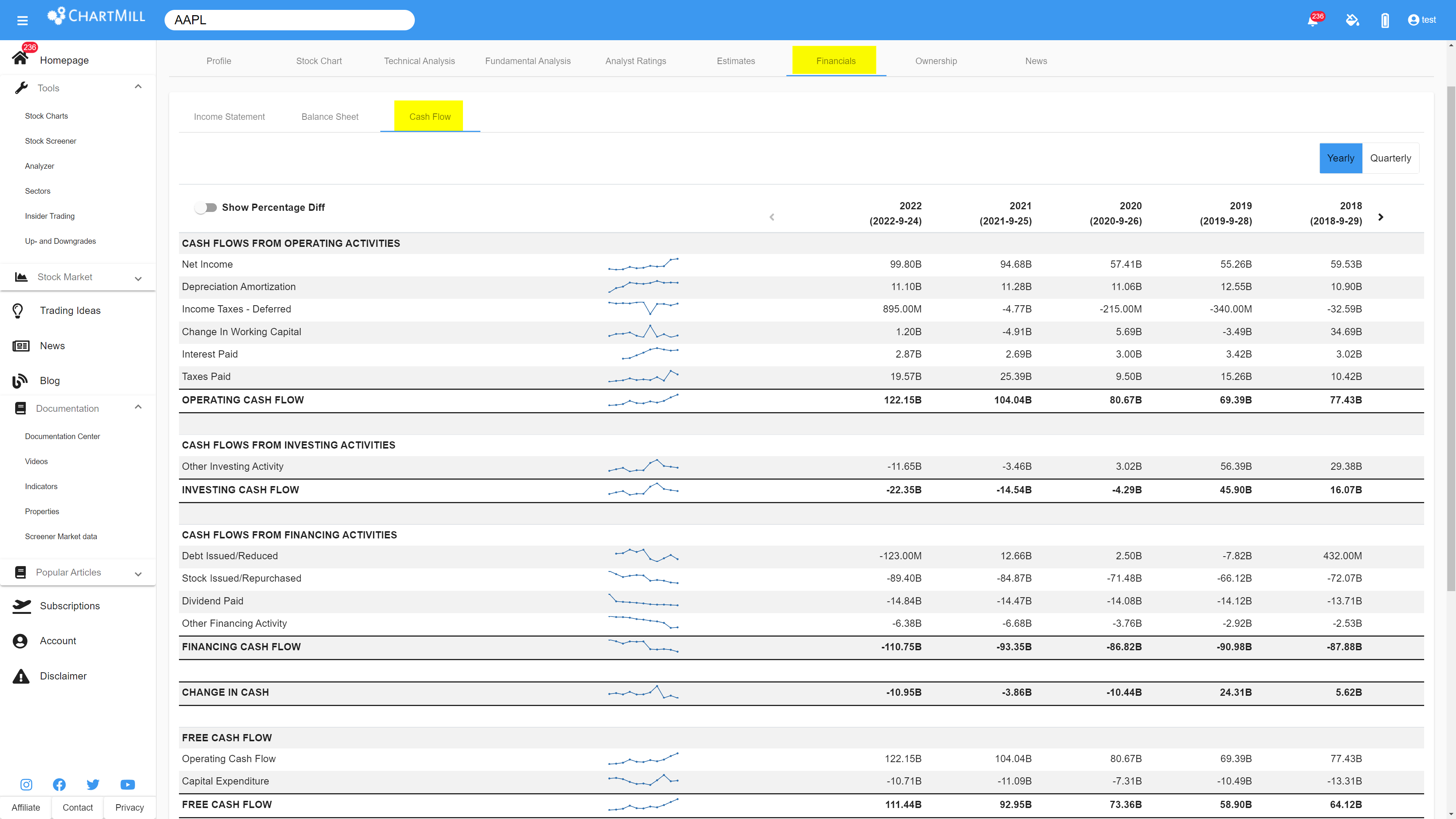
Cash Flow related ratio’s available in ChartMill
Price to free cash flow
Price to free cash flow is a financial ratio that compares a company's stock price to its free cash flow. It is calculated by dividing a company's market capitalization by its free cash flow. This ratio is used by investors to determine whether a company's stock is overvalued or undervalued based on its cash flow. A lower price to free cash flow ratio indicates that a company's stock is undervalued, while a higher ratio indicates that it is overvalued. This ratio is useful because it takes into account a company's ability to generate cash, which is an important factor in determining its value.
Price to operating cash flow
The Price to operating cash flow compares a company's price to its operating cash flow. To do this, a company's market capitalization is divided by its operating cash flow. As with the previous ratio, this provides valuable information about a company's valuation but only based on the cash flow resulting from operating activities. Again, a lower pric/operating cash flow ratio indicates undervaluation, while a higher ratio points toward overvaluation. This ratio also looks at the company's ability to generate cash but considers only its core business, which is an important factor in determining its value.
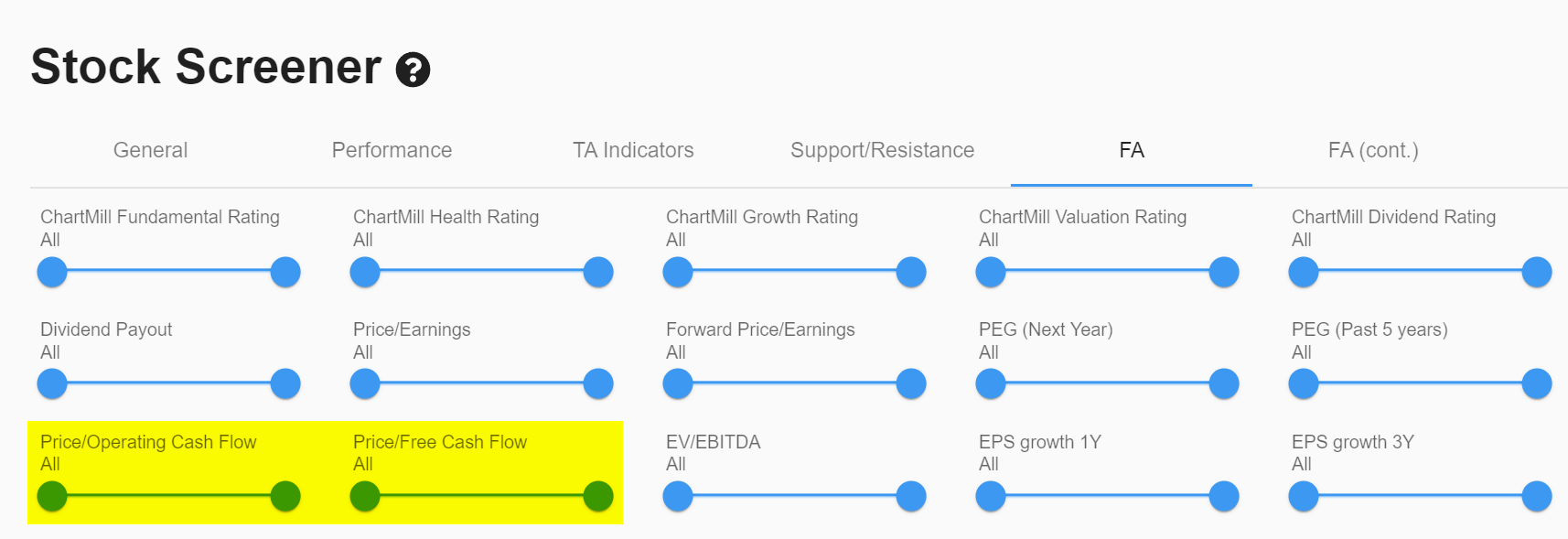
Free and operating cash flow growth (1,3 and 5 years)
A company with strong cash flow growth is generally considered to be in a good financial position and is more likely to withstand economic downturns or other challenges. Moreover, investors often look at cash flow growth when considering whether to invest in a company. Therefore, ChartMill offers specific filters that show cash flow growth over one or more years.
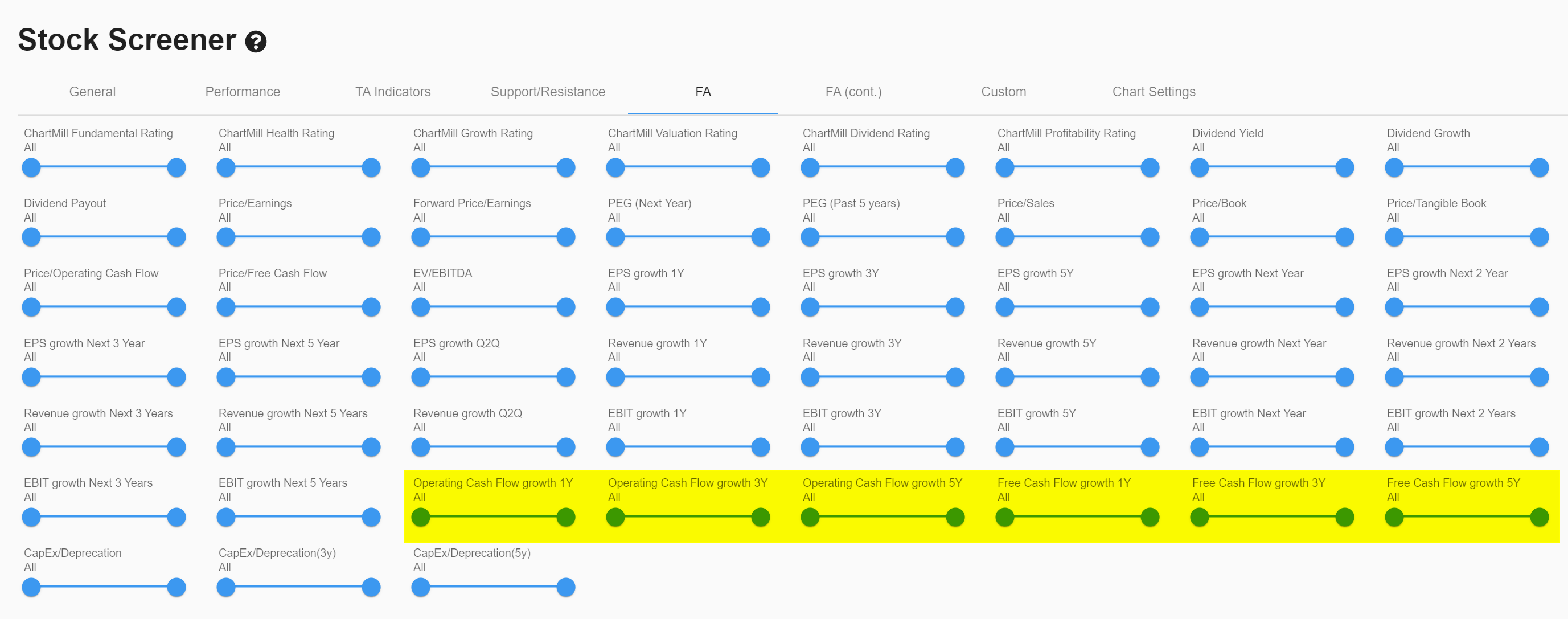
Debt to free cash flow
Debt to free cash flow is a financial ratio that compares a company's total debt to its free cash flow. This ratio indicates the ability of a company to pay off its debt using the cash it generates from its operations. A lower ratio means that a company has more free cash flow available to pay off its debt, which is generally considered to be a good thing. On the other hand, a high ratio may indicate that a company is highly leveraged and may have difficulty paying off its debt.

Profit Quality
Profit quality is a proprietary indicator built in ChartMill. It is defined as the percentage of free cash flow to net income and indicates the extent to which the company is able to convert net profit (an accounting number) into real hard and valuable cash. When all recorded net profit is converted into free cash flow, we can consider the profit to be of high quality.
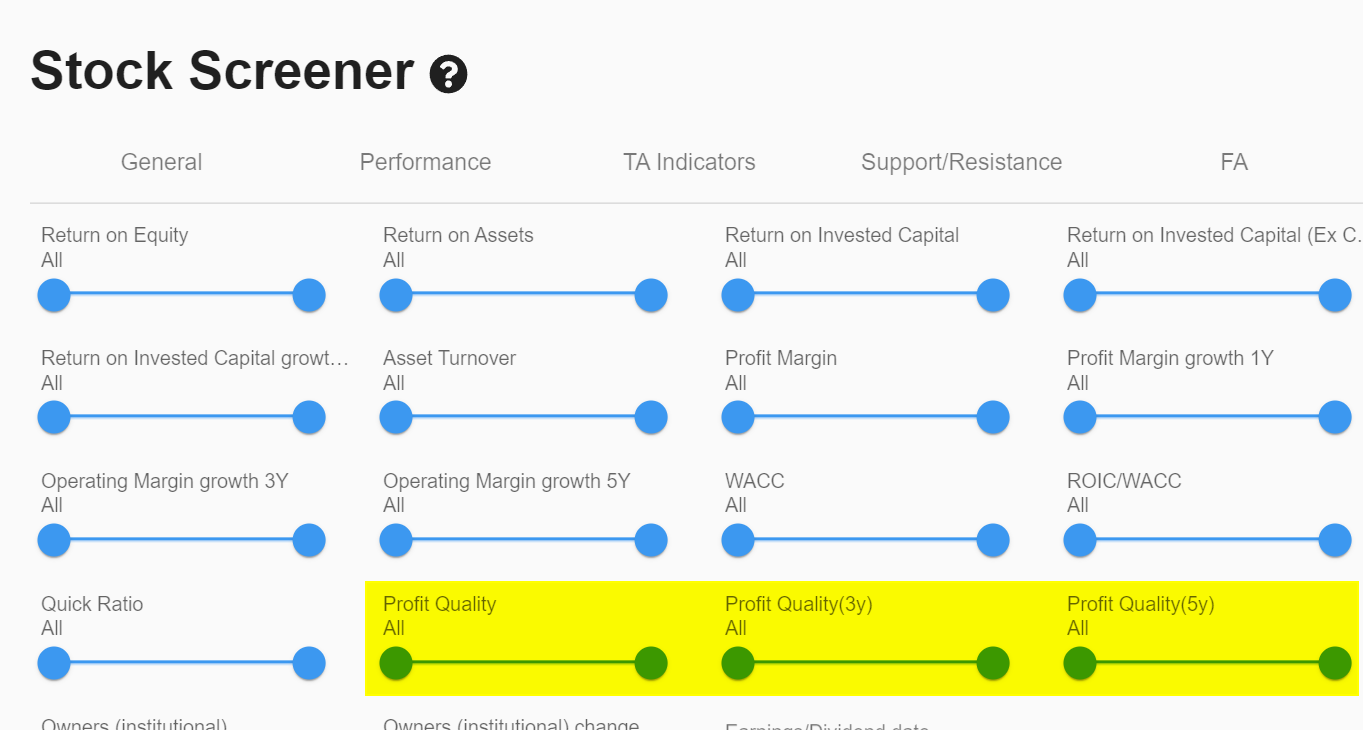
You can read more about this particular indicator and its use in this article.
More Articles On Cash Flow
Free Cash Flow Per Share
Free cash flow per share is a financial metric that indicates the amount of cash generated by a company's operations after accounting for its capital expenditures (capex), interest expenses, and taxes.Read more...
Price to Free Cash Flow: What is it? How to calculate it? How to use it?
The Price to Free Cash Flow ratio is a valuation metric that compares a company's market price per share to its free cash flow per share. Read more...
Mastering Cash Flow Analysis: The Importance of FCF Margin
Free Cash Flow (FCF) margin is a financial metric that measures the percentage of revenue a company generates as free cash flow, relative to its total revenue. Read more...






